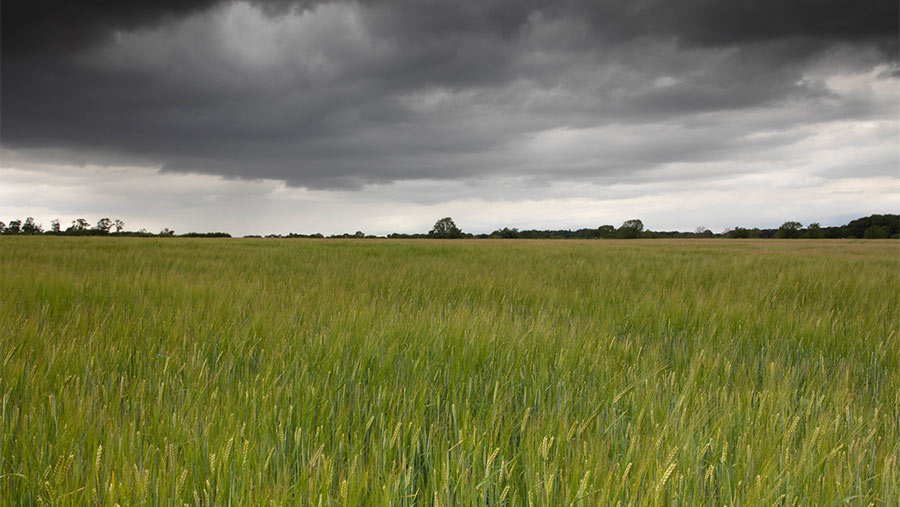Thunderstorms bring brief reprieve to rain-starved farms
 © Tim Scrivener
© Tim Scrivener After weeks of dry weather, widespread thunderstorms have brought much-needed rain, but only enough to provide a brief reprieve for most UK farms.
Scattered thunderstorms hit many farms across the country on Sunday and Monday (11-12 June), causing damage to some maize and oilseed rape crops, but also offering a welcome soaking to rain-starved cereal crops and pastures.
Hampshire young farmer Will Cheyney said the storms hit his 550ha arable farm in Herriard, near Basingstoke, at the weekend, but some nearby farms had no rainfall.
See also: Steps to reduce livestock heat stress as temperatures soar
“The maize needed it, as we had not had any rain since planting it in May,” he said.
“The crop has had fertiliser and with soil temperatures rising, it should start motoring on.
“At the moment, everything looks good, including the spring crops.”
Mixed farmer Colin Rayner said the thunderstorms had done more good than harm to his crops at Berkyn Manor Farm in Horton, Berkshire.
“We had an inch of rain in 15 minutes on Monday. It might have knocked down some of the [oilseed] rape, but it suited the wheat crops, which were looking stressed.”
In Scotland, the Scottish Environment Protection Agency (Sepa) has placed an area of the Highlands under the highest level of water scarcity risk.
And with little rain forecast for the next few weeks, Sepa expects the water scarcity situation to “escalate quickly”.
NFU Scotland’s director of policy Jonnie Hall said the dry weather was becoming a “significant concern” for many farms in Scotland, especially for dairy farmers and arable farmers looking to abstract water to irrigate potato crops.
“We need to build more resilience in terms of water storage and water management into our farming systems,” he added.
“The impact of climate change is affecting our ability to grow crops and ensure the nation’s food security.”
Met Office spokesperson Graham Madge described the thunderstorms as “sporadic”, saying by no means all farms received rainfall.
“With flash flooding and thunderstorms, it rains intensely for 30 minutes then moves away.
“What farmers need is frontal rainfall to really make a difference to water tables and water storage,” he said.
The Met Office’s outlook for June, July and August gives a 45% chance the summer will be hot and a 50% chance it will nearer average.
Meanwhile, there is a 65% chance of near average rainfall, and a 15% chance of a dry season.
